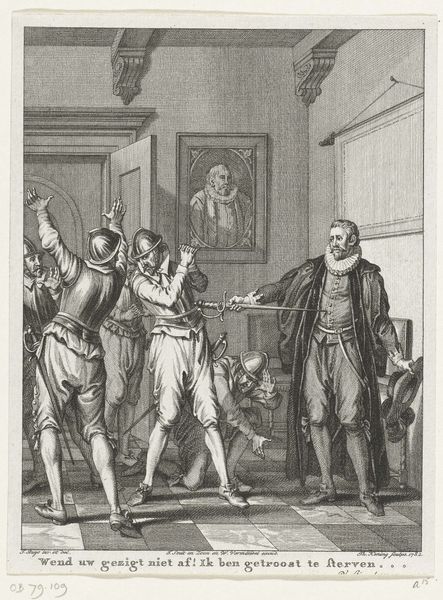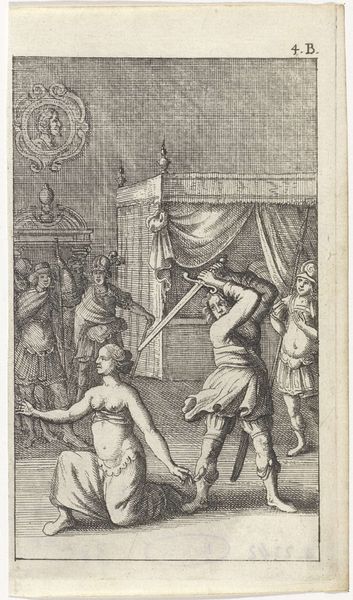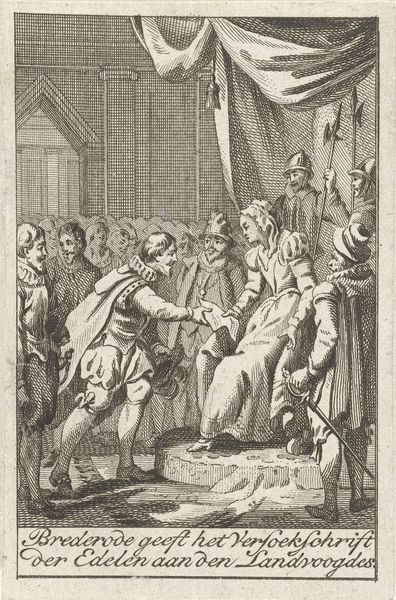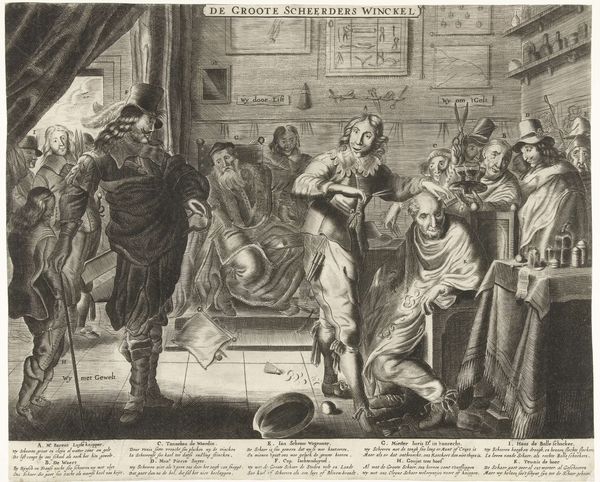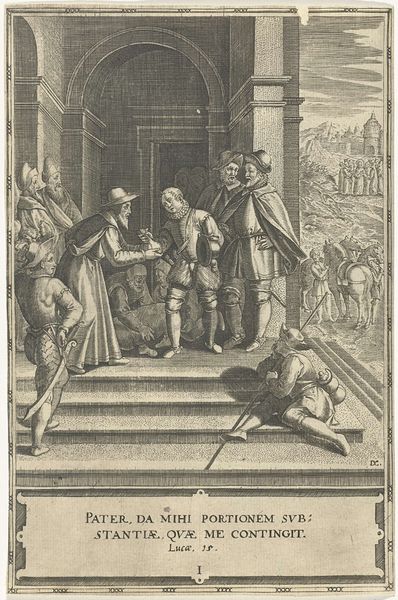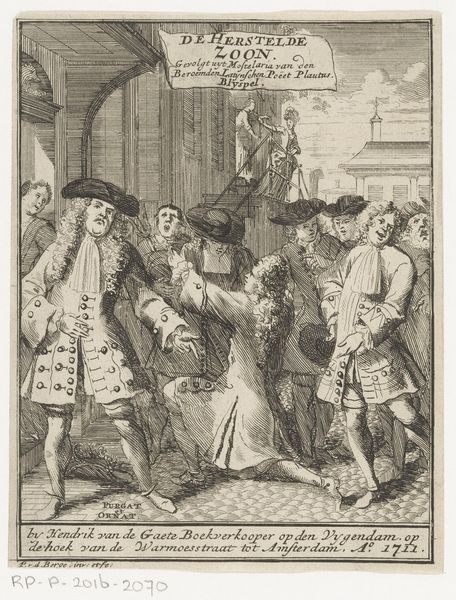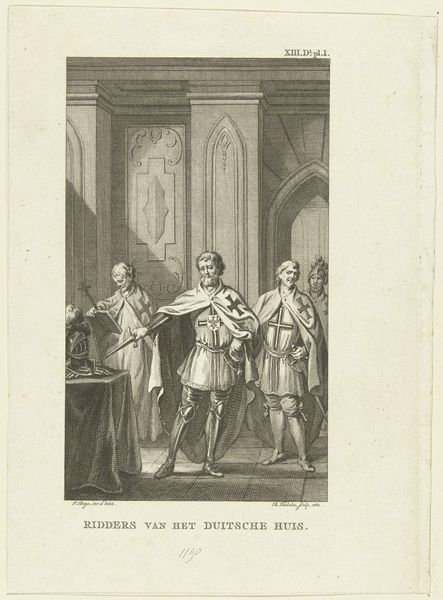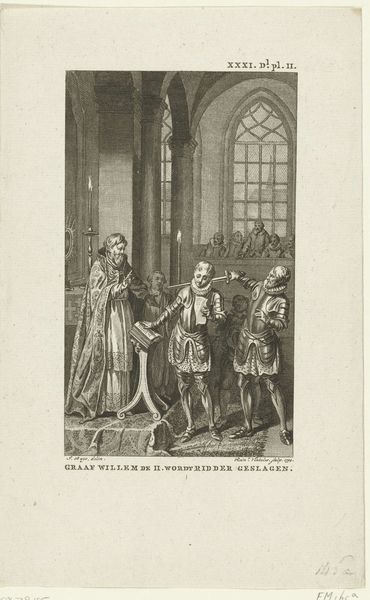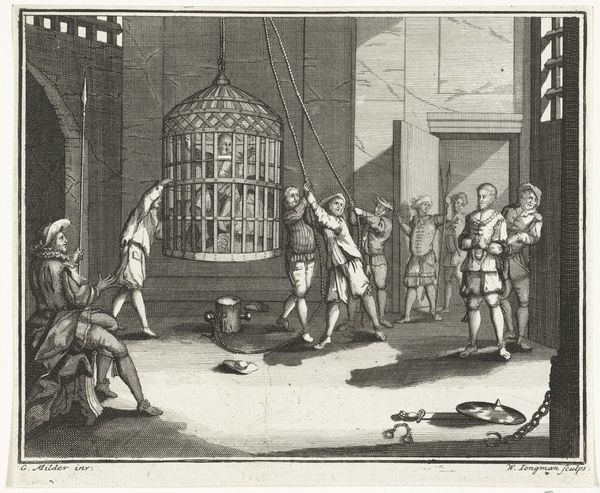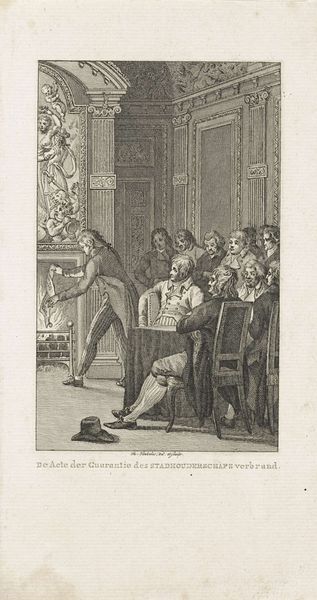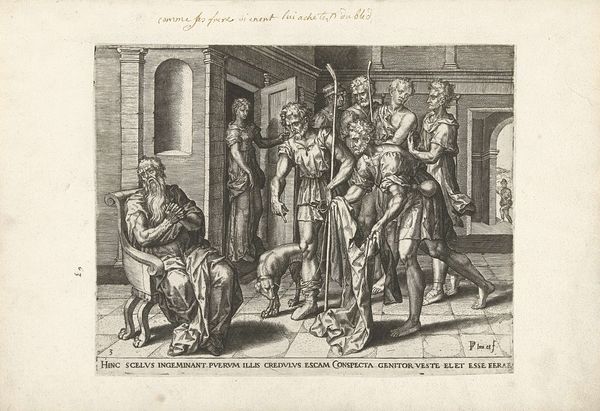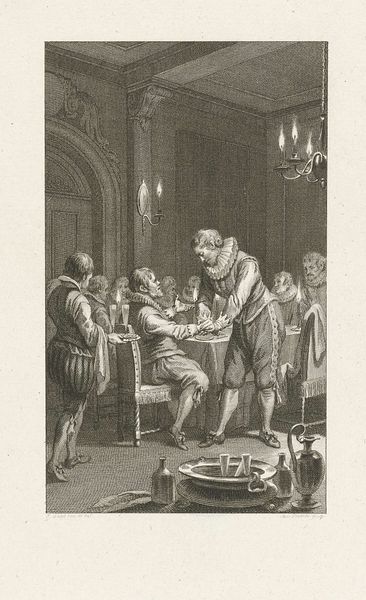
De weduwe van Johan van Oldenbarnevelt smeekt Maurits om genade voor haar zoon Reinier, 1623 1728
0:00
0:00
bernardpicart
Rijksmuseum
print, engraving
#
narrative-art
#
baroque
# print
#
old engraving style
#
figuration
#
history-painting
#
engraving
Dimensions: height 265 mm, width 173 mm
Copyright: Rijks Museum: Open Domain
Curator: Here at the Rijksmuseum, we have a rather poignant scene rendered in engraving by Bernard Picart. Created in 1728, this work is entitled "The Widow of Johan van Oldenbarnevelt pleads with Maurits for the life of her son Reinier, 1623". Editor: The widow's supplicating gesture immediately grabs my attention. There is something terribly desperate in the way she is kneeling. The medium here makes her voluminous dark clothes and Prince Maurits’ pristine clothes rendered almost as shades of white create this really stark contrast and adds to the somberness of it all. Curator: It does indeed evoke a somber mood. Picart's choice of subject matter highlights a pivotal moment in Dutch history, revealing the political tensions of the time. The print underscores the fragility of power and the devastating impact it has on families, which speaks to the enduring role of art as historical commentary. Editor: Considering Picart’s decision to render this scene almost a century after it took place, the material conditions surrounding its making fascinate me. What printing techniques did he use? And, more significantly, how did these processes contribute to the narrative? This level of detail that printing allowed meant access to a wider audience. Curator: It would have taken a craftsman considerable skill to engrave this intricate scene. The clean lines and clear details that we see are hallmarks of the engraving process, revealing the commitment and investment behind each impression of this print, distributed widely. Editor: And considering the materiality also influences perception; I cannot help but think of the distribution and reception that only engravings allow at the time, and of its availability to commoners compared to oil paintings enjoyed by elites. Curator: I agree. By choosing printmaking as a medium, the artist ensured its broader dissemination, which underscores the image's potential to function as a socio-political tool, stirring public sentiments surrounding the tragic events in Dutch history. Editor: The process creates the impact; I see more clearly how materiality is entangled with meaning and accessibility, providing an accessible medium of poignant narrative in early 18th century Netherlands. Curator: It’s a compelling example of how an image becomes interwoven within our collective narrative.
Comments
No comments
Be the first to comment and join the conversation on the ultimate creative platform.
